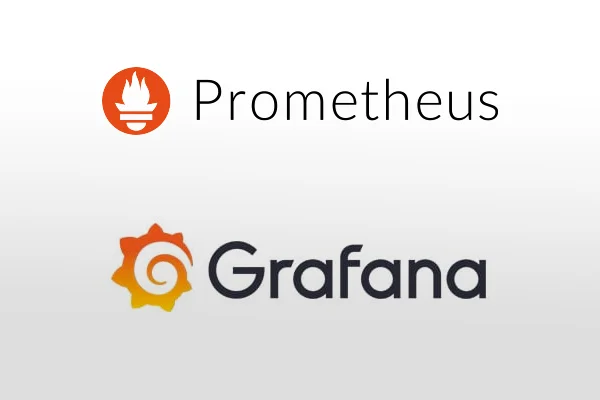Empowering System Monitoring and Visualization with Prometheus and Grafana
 Cloud Tuned
Cloud Tuned
Empowering System Monitoring and Visualization with Prometheus and Grafana
Introduction
In the fast-paced world of technology, the ability to monitor and visualize the performance of systems is crucial for maintaining stability, identifying issues, and ensuring optimal functionality. Two standout tools in this domain, Prometheus and Grafana, have become a dynamic combination widely embraced by DevOps teams and system administrators. This article explores the capabilities of Prometheus and Grafana, showcasing how their integration offers a comprehensive solution for effective system monitoring and visualization.
Prometheus: The Engine of Monitoring Excellence
Prometheus, an open-source monitoring and alerting toolkit, was conceived to address the evolving needs of modern, distributed systems. Developed initially at SoundCloud and later open-sourced, Prometheus stands out for its scalability, reliability, and adaptability.
Key features of Prometheus include:
Pull-Based Architecture: Prometheus utilizes a pull-based model, actively scraping metrics from various targets at scheduled intervals. This approach ensures real-time monitoring and allows for flexibility in collecting data from diverse sources.
Multi-Dimensional Data Model: The multi-dimensional data model employed by Prometheus facilitates the organization and categorization of metrics through key-value pairs. This flexibility proves invaluable when dealing with complex system architectures.
PromQL Query Language: The powerful PromQL query language enables users to express complex queries for analyzing and extracting meaningful insights from the collected metrics. This capability is instrumental in identifying trends, anomalies, and potential issues.
Alerting and Recording Rules: Prometheus allows users to define alerting and recording rules, empowering proactive monitoring and timely responses to system events. This capability ensures that potential issues are identified and addressed before they impact the system.
Grafana: Visualization Unleashed
Grafana, another open-source platform, specializes in creating rich and interactive dashboards that visualize data from various sources. Initially designed to work with Graphite, Grafana has evolved into a versatile tool that supports integration with Prometheus, InfluxDB, Elasticsearch, and more.
Key features of Grafana include:
Extensive Data Source Support: Grafana's strength lies in its ability to integrate seamlessly with a multitude of data sources. This flexibility allows users to aggregate and visualize data from diverse systems, providing a unified view of the entire infrastructure.
Dynamic Dashboard Creation: Grafana simplifies the process of creating visually appealing and informative dashboards. Its user-friendly interface and a plethora of visualization options make it easy for users to design customized dashboards tailored to their specific monitoring needs.
Alerting and Annotations: Grafana extends Prometheus' alerting capabilities by providing a user-friendly interface for configuring alerts and notifications. Annotations allow users to correlate events and changes in metrics, aiding in the identification and analysis of issues.
The Synergy: Prometheus and Grafana in Harmony
The integration of Prometheus and Grafana unlocks a host of benefits for organizations seeking comprehensive system monitoring and visualization:
Real-Time Visibility: The combination of Prometheus and Grafana provides real-time visibility into system metrics, allowing users to monitor performance, identify bottlenecks, and respond promptly to emerging issues.
Customizable Dashboards: Grafana's dynamic dashboards, coupled with Prometheus' rich metrics, empower users to create customizable visualizations tailored to their unique requirements. This ensures that relevant information is presented in a clear and digestible format.
Proactive Alerting: By leveraging Prometheus' alerting rules within Grafana, organizations can establish proactive alerting systems. This integration allows for the timely detection and resolution of potential issues, minimizing downtime and ensuring system reliability.
Historical Analysis: Both Prometheus and Grafana facilitate historical data analysis, enabling users to delve into past trends and performance metrics. This capability is invaluable for capacity planning, trend identification, and retrospective analysis.
Conclusion
Prometheus and Grafana, individually powerful, achieve a synergistic effect when combined. Their seamless integration provides organizations with a robust solution for monitoring, alerting, and visualizing complex systems. As technology landscapes continue to evolve, the Prometheus-Grafana combination remains a stalwart choice for those seeking a flexible, open-source, and feature-rich toolkit to keep their systems in check. By harnessing the capabilities of Prometheus and Grafana, organizations can navigate the complexities of modern IT environments with confidence, ensuring the reliability and performance of their systems.
Subscribe to my newsletter
Read articles from Cloud Tuned directly inside your inbox. Subscribe to the newsletter, and don't miss out.
Written by
